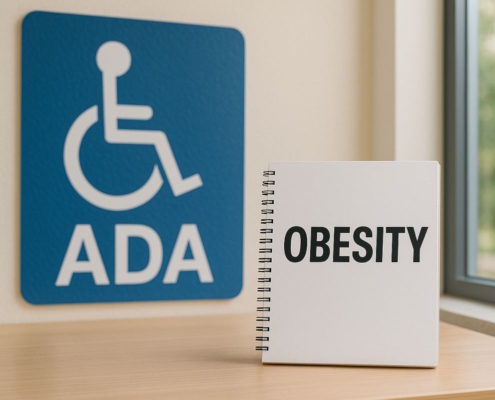What Is Job Analysis: Meaning, Purpose, Description, & Duties and Responsibilities
In short, the meaning of job analysis involves gathering details of duties and responsibilities about specific jobs for the purposes of writing a writing job descriptions, hiring the right worker and training your teams.
By Brad Nakase, Attorney
Email | Call (800) 484-4610
What is job analysis?
Job analysis is a process that systematically recognizes and determines the requirements, responsibilities, and nature of a position at a company. This involves deconstructing the job into smaller pieces, gathering information on each piece, then studying the data to establish the competencies and skills that each role demands.
With job analysis, it is important that you analyze the position itself, rather than the person who is performing the job. The result is a description of the labor, not the people doing it. That said, some job analysis techniques gather information from the employees.
Job analysis offers companies a way to completely understand the nature of a position, or job. It assists in drafting better descriptions of jobs, developing effective training programs, producing a safer work environment, engaging in better workforce planning, and improves performance management.
Job analysis impacts various critical functions of Human Resources, so as an HR professional, you should use it to gather reliable and accurate data.
A successful job analysis should examine the following key components to reveal the critical details and facts about a particular job:
- Environment: the nature of the work environment, like odors, temperatures, and hostile individuals.
- Duties and tasks: the frequency, type, and difficulty of doing the specific tasks and duties.
- Tools and equipment: whatever equipment and tools are needed to do the job to the required standard.
- Requirements: the skills, knowledge, and capabilities that are needed to do the job to the required standard.
- Relationships: connections with external and internal individuals.
The job analysis process concerns reducing the job into smaller parts, like activities, tasks, duties, and elements.
First, let’s go over some definitions:
Job: a group of positions similar to one another.
Position: a group of tasks, duties, elements, and activities that a single worker performs.
Duty: groups of tasks that are meant to meet general goals of the job. A job typically has five to twelve duties.
Tasks: groups of activities with an obvious start, middle, and end. A job usually has thirty to one hundred tasks.
Activity: groups of elements meant to fulfill work requirements.
Element: the smallest recognizable piece of work.
To see how the above definitions apply in practice, let’s consider an example. Cindy is a receptionist at ABC Company. Therefore, her job is ‘receptionist’. Her position is the receptionist who mainly works the 9-5 shift at the office. Her duty is hospitality services for people who visit or call the company. Her tasks include welcoming visitors and signing them in. Her activity may include taking messages. An element in Cindy’s case may include answering the telephone.
From here, job analysis relies on recognizing the foundation of a job based on these smaller units of labor. In fact, there are a number of ways to approach doing this.
Job analysis may be performed by managers, Organizational Development professionals, employees, or HR professionals. It is likely that anyone with at least some work experience has performed a job analysis. This may be a manager who chooses to merge two empty roles into a single job. It may also be a recruiter who attempts to write a job description. It could also be an employee who describes their main duties as they update a resume. While each of these analyses will have varying levels of detail, the process of creating them is similar.
What are job analysis data types?
There are three main kinds of job analysis data:
- Worker attributes: information on the qualities that employees need to complete a job.
- Work activities: information on the unique activities that a job consists of.
- Work context: information on the external and internal job environment.
This article will primarily address work activities, which make up the foundation for assessing the organizational culture and worker attributes. There will be less focus on work context, though you should be aware of this element in your job analysis.
What is the purpose of job analysis?
Prior to performing an analysis for a particular job, you should first specify what the results of the analysis will be used for. This way, you may select the most effective analysis strategy.
Our attorney for employers in Los Angeles often advises HR on job analysis. HR will use the results of a job analysis as the basis for writing a job description. This is an internal form that indicates the requirements for a position, including the role in the team, the required skills, personality, and capabilities of a qualified applicant. Using job analysis data to create a job description allows you to put the right individuals in the right positions.
Job classification is when one or more jobs are placed in a family, or cluster, of similar positions. Job classification requires job analysis data because the latter takes into account the responsibilities, duties, complexity, and scope of a job. The objective is to use this information in candidate selection and the setting of pay rates.
Job evaluation is the process of assigning the rank of different positions in a company. This is to establish equity and pay transparency. A job’s rank is based on its duties and responsibilities. For instance, senior roles have higher capability and performance requirements. The purpose of job analysis is to understand these characteristics.
Job design is the creation of a role that adds value to the business and is worthwhile for the employee. A motivating job should have skill variety – that is to say, it should require a broad range of skills. Job analysis can assist you in defining a job’s skill variety.
Human Resources can also use the results of job analysis to establish the minimum requirements or qualifications of roles within the company. This can be helpful in recruitment.
Job analysis also provides information needed for the performance appraisal of an employee currently performing a job. To assess an employee’s performance, you first need to understand the requirements of a role. Job analysis will provide these necessary details.
Job analysis also forms the foundation of training needs analysis. After you have identified the skills, knowledge, abilities, and other characteristics, you may assess what skills gaps or training needs exist. This permits you to effectively train employees.
Ideally, individuals and jobs should be a good match. Job analysis can help identify the skills, knowledge, and abilities that are necessary for a certain role, which an HR professional can then match with an external or internal hire.
Job analysis can also boost efficiency at work by studying activities and optimizing how individuals in the position do them.
With the help of job analysis, you can recognize dangerous working conditions and behaviors that increase the odds of injury or accidents. This can lead to a safer work environment.
Job analysis can also help when looking toward the future. It identifies the skills, abilities, knowledge, and other characteristics that a company will need in the future. This allows for the creation of a strategic workforce plan for a department or even a specific role.
Federal law sets standards that apply to health, working conditions, training, hiring, promotion, pay, and termination. As a tool, job analysis can ensure that all activities are in compliance with government regulations.
What is the importance of job analysis?
Job analysis is important for several reasons:
- Recruitment and Selection: Job analysis helps in identifying the key requirements, duties, and responsibilities of a job. This information is crucial for developing accurate job descriptions and job specifications, which are used in recruitment and selection processes. By understanding the skills, qualifications, and competencies needed for a particular job, HR professionals can effectively attract and select candidates who possess the desired attributes.
- Performance Management: Job analysis provides a foundation for performance management by defining performance standards and expectations. By analyzing the tasks, behaviors, and outcomes associated with a job, HR professionals can set clear performance objectives, establish performance appraisal criteria, and provide feedback to employees. This helps in evaluating and improving individual and team performance.
- Training and Development: Job analysis helps in identifying the knowledge, skills, and abilities required to perform a job effectively. This information is valuable for designing and delivering training programs that address specific job-related needs. By understanding the tasks and competencies involved in a job, HR professionals can ensure that training initiatives are aligned with organizational goals and enhance employee skills and performance.
- Compensation and Benefits: Job analysis is essential for establishing equitable and fair compensation and benefits systems. By analyzing job duties, responsibilities, and requirements, HR professionals can determine the relative worth of different jobs within an organization. This information forms the basis for developing job evaluation systems, job grading structures, and pay scales, which ensure that employees are compensated appropriately based on their job responsibilities and contributions.
- Workforce Planning and Organizational Design: Job analysis helps in understanding the structure and design of an organization. By examining the tasks and relationships within different jobs, HR professionals can identify duplication of efforts, gaps in responsibilities, and opportunities for redesigning job roles. This information is useful for workforce planning, organizational restructuring, and ensuring efficient use of human resources.
- Compliance and Legal Requirements: Job analysis plays a crucial role in ensuring compliance with various legal and regulatory requirements. By documenting job requirements, qualifications, and essential functions, organizations can demonstrate adherence to equal employment opportunity laws, disability accommodations, and health and safety regulations. Job analysis also provides a factual basis for justifying job-related decisions and defending against legal challenges.
What is Critical incident technique (CIT)?
Critical Incident Technique (CIT) is a qualitative research method used to identify and analyze specific behaviors or events that are critical to job performance. It involves collecting and examining detailed narratives or descriptions of incidents that represent exemplary or problematic performance in a particular job or role. These incidents, called critical incidents, provide insights into the key behaviors, skills, and characteristics required for effective job performance.
The elements of a CIT report typically include:
- Incident Description: The report should provide a clear and detailed description of the critical incident, including the context, setting, and individuals involved. It should outline the specific actions, behaviors, or events that occurred, focusing on the behaviors that contributed to either exceptional or problematic performance.
- Behavior Analysis: This section analyzes the behaviors exhibited during the critical incident. It identifies the specific actions, skills, competencies, or qualities that were demonstrated, and examines their impact on the outcome or result of the incident. The analysis should highlight the relevance and importance of these behaviors to successful job performance.
- Importance Rating: In this part, the report assigns ratings or scores to the identified behaviors based on their perceived importance or impact on job performance. This rating can be determined through expert judgment, input from job incumbents, or other stakeholders who possess knowledge of the job requirements. The rating helps in prioritizing and distinguishing critical behaviors from less significant ones.
- Recommendations: The CIT report may provide recommendations based on the analysis of the critical incidents. These recommendations could suggest ways to enhance or develop specific skills, behaviors, or competencies that are deemed crucial for successful job performance. The report may also propose changes to training programs, selection processes, or performance management practices based on the findings.
- Validity and Reliability: To ensure the rigor and credibility of the CIT report, it should include information about the methodology used, the process of incident selection, and the criteria for determining the validity and reliability of the critical incidents identified. This section provides transparency and allows readers to evaluate the credibility of the findings.
Nakase Wade’s small business attorney in San Diego note that the specific elements of a CIT report may vary depending on the purpose, scope, and context of the study. The goal is to provide a comprehensive analysis of critical incidents and their implications for job performance, ultimately informing HR practices such as selection, training, and performance management.
What is task inventory (TI)?
Task inventory (TI) is a comprehensive list or inventory of specific tasks, duties, and responsibilities that are performed in a particular job or role. It is a systematic approach to job analysis, where the various tasks associated with a job are identified and categorized.
The task inventory serves as a valuable tool in understanding the scope of work and requirements of a job. It provides a detailed breakdown of the specific activities and functions performed by individuals in that role. By creating a task inventory, companies can have a clear overview of the essential tasks required for successful job performance.
To develop a task inventory, job analysts typically conduct interviews, observations, and review relevant documentation to identify and document the tasks performed by incumbents in the job. They may consult with subject matter experts, supervisors, and employees themselves to ensure accuracy and comprehensiveness.
The task inventory can be used for various purposes, such as developing job descriptions, designing training programs, determining performance criteria, and assessing job requirements for recruitment and selection purposes. It provides a foundation for understanding the job and serves as a reference for various HR functions.
Once the task inventory is created, it can be further analyzed and prioritized to identify critical tasks, frequency of occurrence, required skills and knowledge, and potential interdependencies with other tasks or roles within the company.
What is functional job analysis?
Functional Job Analysis (FJA) is a systematic method used in job analysis to assess and understand the components and requirements of a job. It focuses on the functional aspects of a job, including the interactions between people, data, and things.
FJA was developed by Sidney A. Fine in the 1950s and has since been widely used in various organizations and industries. It strives to provide a standardized framework for job analysis by breaking down job tasks into three key dimensions:
- Things: This dimension focuses on the objects, tools, and equipment used in the job. It includes physical materials, machinery, instruments, and any tangible resources required to perform the tasks effectively. For instance, in a manufacturing job, the “things” dimension may involve operating specific machinery or using specialized tools.
- Data: This dimension involves the information, knowledge, and data used and manipulated in the job. It includes gathering, analyzing, processing, and interpreting information relevant to job tasks. For instance, in a data analyst role, the “data” dimension may involve collecting and analyzing large datasets, generating reports, and drawing insights from the data.
- People: This dimension focuses on the interpersonal interactions and relationships involved in the job. It includes communication, coordination, supervision, teamwork, and other social aspects. As an example, in a customer service role, the “people” dimension may involve interacting with customers, resolving issues, and providing assistance.
FJA analyzes these dimensions by evaluating the level of involvement or emphasis placed on each dimension for a particular job. This assessment helps in understanding the nature of the job and identifying the critical tasks and competencies required for successful job performance.
The FJA process typically involves collecting data through job observations, interviews with job incumbents and supervisors, and reviewing relevant documentation. The data collected is then used to generate a functional job analysis report, which provides a detailed breakdown of the tasks and requirements of the job based on the three dimensions.
FJA is often utilized in various HR functions, including job design, job evaluation, training and development, performance management, and recruitment and selection. It provides a structured approach to understanding job roles, enabling organizations to align job requirements with organizational goals and make informed decisions in various HR processes.
What is the job analysis process?
Determine the purpose
The first step in the job analysis process is determining the purpose or objective of the job analysis. This step involves clarifying why the job analysis is being conducted and what specific outcomes or goals the company aims to achieve through the process.
Defining the purpose of job analysis is crucial as it sets the direction for the entire analysis and ensures that efforts are focused and aligned with organizational needs. The purpose may vary depending on the specific organizational context and the objectives to be achieved. The following are some common purposes of job analysis:
- Recruitment and Selection: Job analysis helps in identifying the knowledge, skills, abilities, and other characteristics required for successful job performance. By clarifying the job requirements, organizations can effectively develop job descriptions, job specifications, and competency frameworks to guide the recruitment and selection of candidates who possess the necessary qualifications.
- Training and Development: Job analysis provides insights into the tasks, responsibilities, and competencies required for a job. This information is essential for designing and delivering effective training programs that address the specific needs of employees. By understanding the job requirements, organizations can align training initiatives with the skills and knowledge necessary for optimal job performance.
- Performance Management: Job analysis plays a key role in performance management by defining the performance criteria and expectations for a job. It helps in establishing clear performance standards, identifying key performance indicators, and setting objectives for employees. Job analysis ensures that performance appraisals and feedback are based on a solid understanding of the job and its requirements.
- Job Design and Organizational Structure: Job analysis assists in designing or redesigning jobs and determining their place within the company structure. It provides insights into the tasks, responsibilities, and interdependencies of jobs, allowing companies to create meaningful job roles, assign work effectively, and establish clear reporting relationships.
- Compensation and Benefits: Job analysis helps in determining the relative worth and value of jobs within a company. By analyzing the tasks, responsibilities, and qualifications associated with a job, companies can establish fair and equitable compensation structures and develop job evaluation systems that ensure internal and external pay equity.
- Compliance and Legal Requirements: Job analysis is crucial for ensuring compliance with various legal and regulatory requirements. By documenting job responsibilities, qualifications, and essential functions, organizations can demonstrate adherence to equal employment opportunity laws, disability accommodations, health and safety regulations, and other legal requirements.
To determine the purpose of job analysis, organizations should speak with key stakeholders such as HR professionals, supervisors, current employees with the job, and other relevant individuals. By considering organizational objectives, challenges, and priorities, the purpose can be defined in a way that supports the overall strategic goals of the organization and addresses specific HR needs effectively.
Choose the method
The second step in the job analysis process is selecting the appropriate method or combination of methods to gather data and information about the job. The chosen method will depend on various factors, including the nature of the job, available resources, and the objectives of the job analysis. The following are some commonly used methods in job analysis:
- Interviews: Job analysis interviews involve conducting structured or unstructured interviews with job incumbents, supervisors, and subject matter experts. The interviews aim to gather detailed information about job tasks, responsibilities, knowledge, skills, and other job-related factors. This method allows for direct interaction and probing questions to gain a comprehensive understanding of the job.
- Questionnaires or Surveys: Job analysis questionnaires or surveys involve administering standardized questionnaires to job incumbents or supervisors to collect information about job-related factors. These questionnaires may include rating scales, open-ended questions, or checklist-style items to capture the tasks, skills, competencies, and other relevant aspects of the job. This method is useful when analyzing a large number of jobs or when geographical constraints make interviews challenging.
- Observation: Job analysis through direct observation involves observing job incumbents as they perform their tasks. Observers carefully note and record the behaviors, actions, and processes involved in the job. This method provides an in-depth understanding of the job by capturing the actual work behaviors and interactions in real-time. That said, it may require considerable time and effort to observe and document the job accurately.
- Work Diaries or Logs: Current employees might maintain work diaries or logs to record their activities, tasks, and time spent on various job-related tasks. These records can provide insights into the frequency, duration, and sequence of tasks performed in the job. Work diaries can be helpful when analyzing jobs that involve a high degree of variability or where tasks may change based on specific circumstances.
- Job Performance Data: Analyzing existing job performance data, such as performance evaluations, productivity metrics, or incident reports, can offer valuable insights into the critical aspects of a job. This method relies on existing records and data to identify the key job requirements and areas of performance strength or improvement.
- Job Analysis Workshops or Focus Groups: Job analysis workshops or focus groups bring together multiple stakeholders, including job incumbents, supervisors, and HR professionals, to collaboratively discuss and identify the tasks, responsibilities, and other job-related factors. These interactive sessions can help capture different perspectives, promote shared understanding, and ensure buy-in from stakeholders.
It is important to select the most appropriate method or combination of methods based on the objectives, resources, and constraints of the job analysis process. Often, a combination of methods is used to gather comprehensive and reliable data. Additionally, involving multiple perspectives, such as current employees, supervisors, and subject matter experts, can enhance the accuracy and validity of the job analysis.
Collect the data
The third step in the job analysis process is gathering data. Once the appropriate job analysis methods have been selected, the focus shifts to collecting information and data about the job. This step involves implementing the chosen methods and techniques to gather relevant and accurate data. The following are some important considerations for gathering job analysis data:
- Implementing Interviews or Questionnaires: If interviews or questionnaires are selected as the method, the data collection process involves scheduling and conducting structured or unstructured interviews or distributing and collecting questionnaires. Interviewers should ensure clarity in questioning and actively listen to respondents to gather comprehensive and detailed information about the job.
- Conducting Observations: If direct observation is chosen, job analysts need to plan and schedule observations of job incumbents as they perform their tasks. Observers should record their observations accurately, noting the sequence of tasks, behaviors, and interactions involved in the job. They may use checklists, rating scales, or narrative descriptions to capture the observed data effectively.
- Reviewing Documentation: Job analysis may involve reviewing relevant documentation such as job descriptions, performance evaluations, training manuals, or standard operating procedures. Analyzing these documents helps in understanding the tasks, responsibilities, and competencies associated with the job. The job analyst should critically assess the accuracy and completeness of the information provided in the documents.
- Analyzing Existing Data: If job performance data or other existing data sources are being used, the job analyst should gather and review the available records. This may involve examining performance evaluations, productivity metrics, incident reports, or any other data sources that provide insights into the job requirements and performance.
- Seeking Input from Multiple Sources: It is essential to involve multiple stakeholders in the data gathering process. This can include job incumbents, supervisors, subject matter experts, and other individuals with relevant knowledge and experience. Gathering input from diverse sources helps to validate and enrich the data collected, ensuring a comprehensive understanding of the job.
During the data gathering process, it is important to ensure the confidentiality and anonymity of participants, especially when collecting data through interviews or questionnaires. Providing clear instructions, addressing any concerns or questions, and establishing trust with participants can contribute to the quality and accuracy of the data collected.
Once the data gathering is complete, it is necessary to organize and analyze the collected data in the subsequent steps of the job analysis process. This involves categorizing and synthesizing the data to identify patterns, themes, and commonalities across different data sources. The analysis helps in deriving meaningful insights and documenting the key aspects of the job.
Analyze the data
The fourth step in the job analysis process is the analysis of the data collected during the previous step. The purpose of the analysis is to make sense of the data, identify patterns, and extract key information about the job. Here are the key elements involved in the analysis step:
- Data Review: The first step in the analysis process is to review and organize the collected data. This involves carefully reviewing the interview transcripts, questionnaire responses, observation notes, and other relevant data sources. The data may be categorized based on themes or job dimensions, such as tasks, skills, knowledge, and responsibilities.
- Identifying Task Statements: Job analysts analyze the data to identify specific task statements that describe the essential tasks performed in the job. Task statements should be clear, concise, and reflect the activities and responsibilities performed by job incumbents. They serve as the foundation for developing job descriptions, competency models, and other job-related documents.
- Extracting Competencies: Competencies refer to the knowledge, skills, abilities, and other characteristics required to perform a job successfully. During the analysis, job analysts identify the competencies exhibited by high-performing job incumbents. They extract the specific competencies required for the job, such as technical skills, interpersonal skills, problem-solving abilities, or leadership qualities.
- Identifying Job Requirements: Job analysis involves identifying the qualifications and requirements necessary for a job. Analysts review the data to determine the educational background, certifications, experience, and other qualifications essential for performing the job effectively. This information is useful in developing job specifications and setting criteria for recruitment and selection processes.
- Analyzing Relationships and Inter-dependencies: The analysis also focuses on understanding the relationships and inter-dependencies between different tasks, roles, and departments within the organization. This helps in identifying the collaborative aspects of the job and potential cross-functional interactions. Analyzing relationships allows for better job design, resource allocation, and coordination within the organization.
- Validating and Verifying Data: During the analysis, job analysts should ensure the validity and reliability of the data. This may involve cross-referencing information from multiple sources, seeking feedback from subject matter experts, or conducting follow-up discussions with job incumbents or supervisors to clarify any ambiguities or inconsistencies in the data.
- Documenting Findings: Finally, the analysis phase concludes with documenting the key findings and insights from the data analysis. This includes summarizing the identified tasks, competencies, job requirements, and relationships. The documented findings serve as a reference for developing job descriptions, competency models, training programs, and other HR processes.
Throughout the analysis step, it is important to involve relevant stakeholders such as job incumbents, supervisors, and subject matter experts to validate the findings and ensure accuracy. Collaboration and communication with these stakeholders help in obtaining a comprehensive and accurate understanding of the job.
The analysis phase sets the stage for the subsequent steps of the job analysis process, such as developing job descriptions, determining job evaluation criteria, and aligning HR practices with the job requirements.
Assess the impact
The fifth step in the job analysis process is assessing the impact of the job analysis findings. Once the data has been analyzed and the key information about the job has been identified, it is important to evaluate how the findings will impact various HR processes and organizational outcomes. The following are the key parts of the impact assessment step:
- Job Design and Redesign: The job analysis findings can have implications for job design or redesign efforts within the organization. By understanding the tasks, responsibilities, and requirements of the job, organizations can assess if any modifications or adjustments are necessary to optimize job performance and align with organizational goals. This may involve revising task allocations, changing reporting relationships, or incorporating new technologies to improve efficiency and effectiveness.
- Training and Development: The job analysis findings provide valuable insights into the skills, knowledge, and competencies necessary for successful job performance. Organizations can use this information to design and deliver targeted training and development programs to enhance employees’ capabilities and address any identified skill gaps. The findings can also guide the creation of learning objectives, curriculum design, and the selection of appropriate training methods.
- Recruitment and Selection: The job analysis findings serve as the foundation for developing accurate job descriptions and job specifications, which are critical in recruitment and selection processes. Organizations can use the findings to identify the desired qualifications, skills, and competencies needed in candidates for a particular job. This information helps in attracting, screening, and selecting candidates who are the best fit for the job requirements.
- Performance Management: The job analysis findings influence performance management processes, including performance appraisal and goal setting. Clear understanding of job responsibilities and performance criteria allows organizations to establish meaningful performance objectives and standards. It helps in aligning performance expectations, providing constructive feedback, and conducting fair and accurate performance evaluations.
- Compensation and Benefits: The job analysis findings play a significant role in determining the relative worth and value of jobs within the organization. Organizations can use the data to establish fair and equitable compensation structures, conduct job evaluations, and develop salary scales. The findings also contribute to designing appropriate incentive and reward systems based on the job requirements and performance expectations.
- Compliance and Legal Considerations: Job analysis findings help organizations ensure compliance with various legal and regulatory requirements. The data can assist in demonstrating equal employment opportunity, reasonable accommodation for individuals with disabilities, health and safety compliance, and other legal obligations related to job design and employment practices.
- Succession Planning and Career Development: The job analysis findings can inform succession planning and career development initiatives within the company. By identifying the critical tasks and competencies required for a job, companies can identify potential successors, create development plans, and provide career pathways that align with the job requirements and business needs.
Assessing the impact of job analysis findings requires collaboration and communication with relevant stakeholders, such as HR professionals, supervisors, and employees. It helps ensure that the findings are effectively utilized to improve HR practices, enhance business performance, and support strategic decision-making.
What is the difference between job description and job analysis?
Job description and job analysis are two distinct concepts in the field of Human Resources. Let’s discuss the difference between the two.
Job analysis may be defined as the systematic process of gathering and analyzing information about a job. It involves studying and documenting various aspects of a job, such as tasks, responsibilities, skills, knowledge, qualifications, and work environment. The purpose of job analysis is to obtain a comprehensive understanding of a job’s requirements and characteristics. It serves as the foundation for various HR processes, including job design, recruitment and selection, performance management, training and development, and compensation. Job analysis involves collecting data through methods such as interviews, questionnaires, observations, and document review. The analysis phase involves organizing and synthesizing the data to extract key information about the job.
By contrast, a job description is a written document that provides a summary of the key elements and requirements of a specific job. It is derived from the information obtained through job analysis. A job description typically includes the job title, job summary or overview, essential duties and responsibilities, required qualifications, skills, and competencies, reporting relationships, and sometimes information about working conditions or physical demands. It provides a clear picture of what the job entails and what is expected from an employee performing that job. Job descriptions are used in various HR processes, such as recruitment, performance management, and compensation. They serve as a communication tool between employers and employees, helping to establish expectations and align understanding.
In sum, job analysis is the process of gathering and analyzing information about a job, while a job description is the written document that summarizes the key elements and requirements of a specific job. Job analysis provides the foundational data for creating accurate and detailed job descriptions. Job descriptions, in turn, serve as practical tools for communicating job expectations and guiding HR processes.
Have a quick question? We answered nearly 2000 FAQs.
See all blogs: Business | Corporate | Employment
Most recent blogs:































